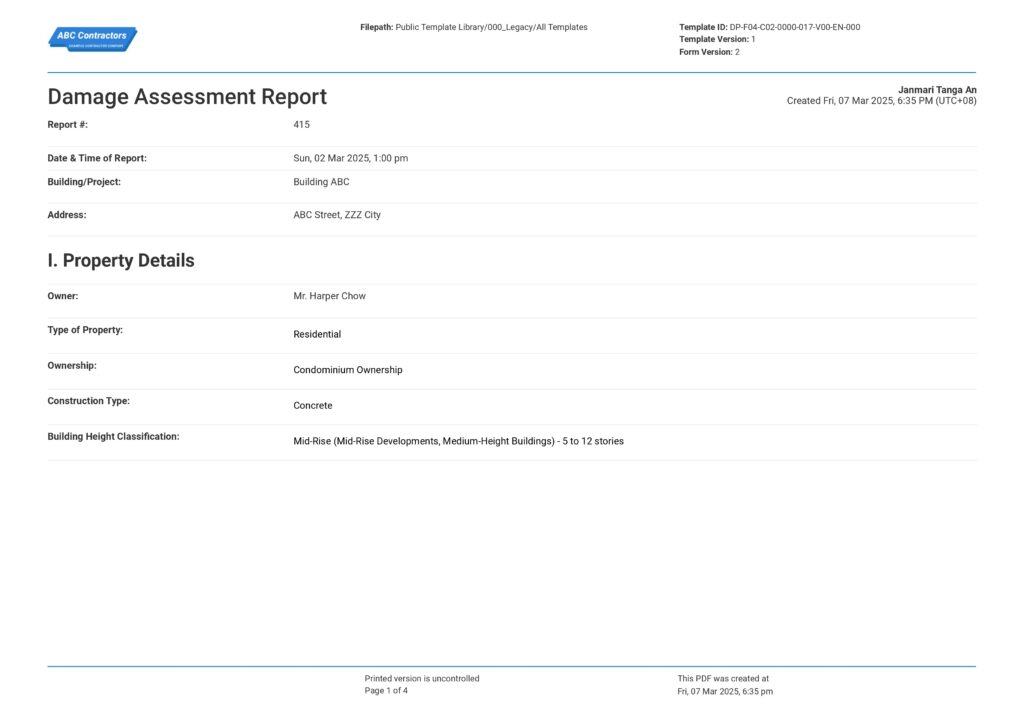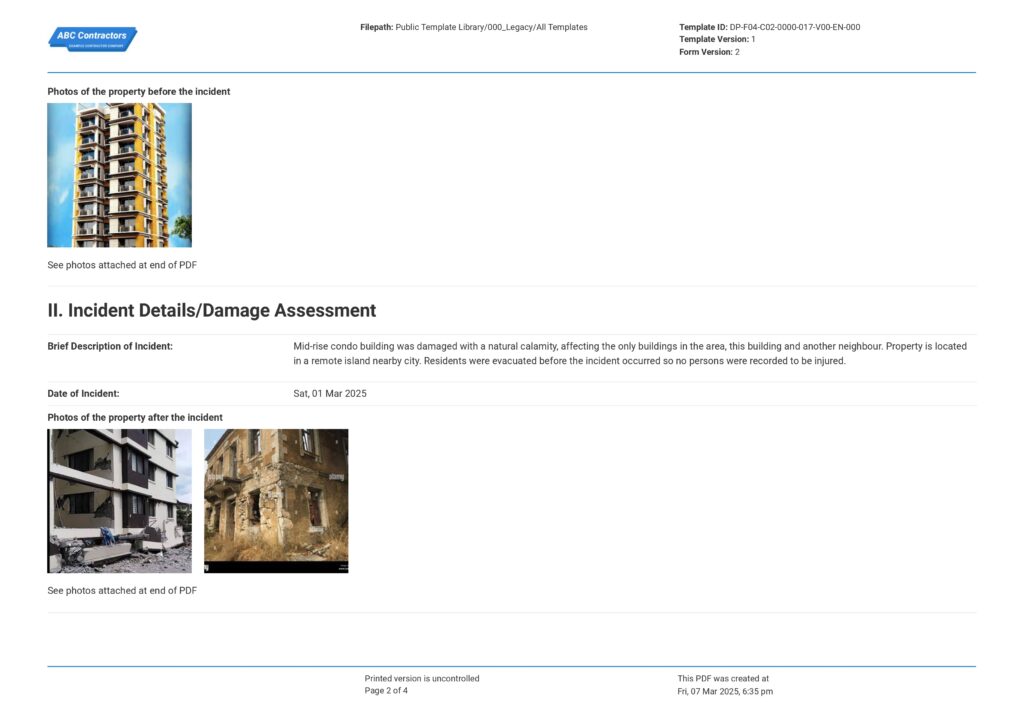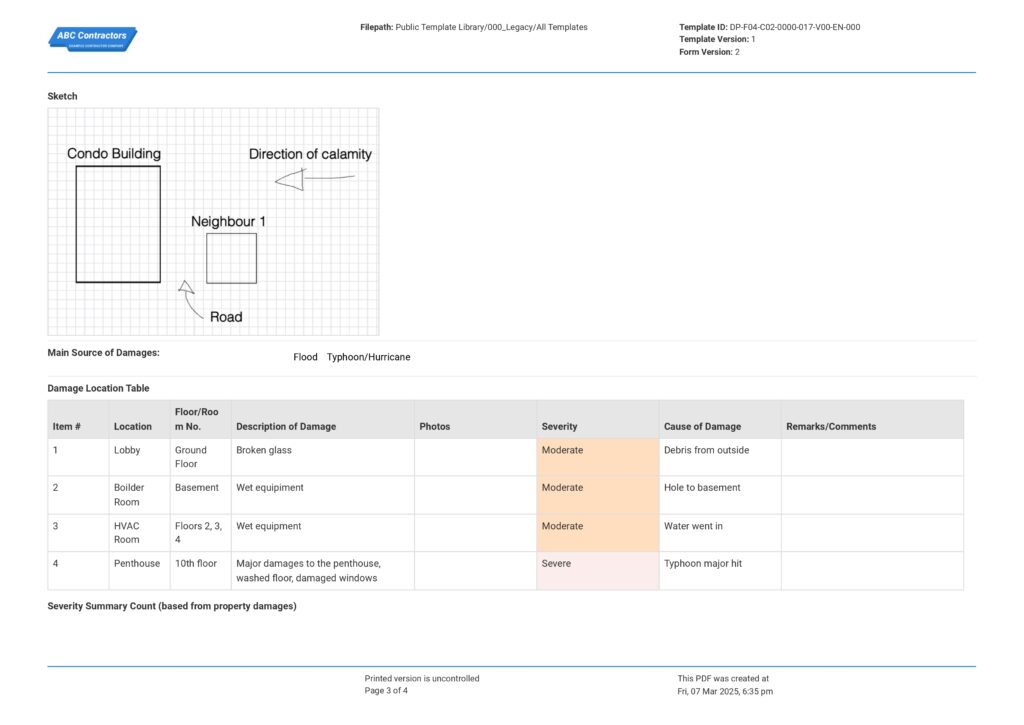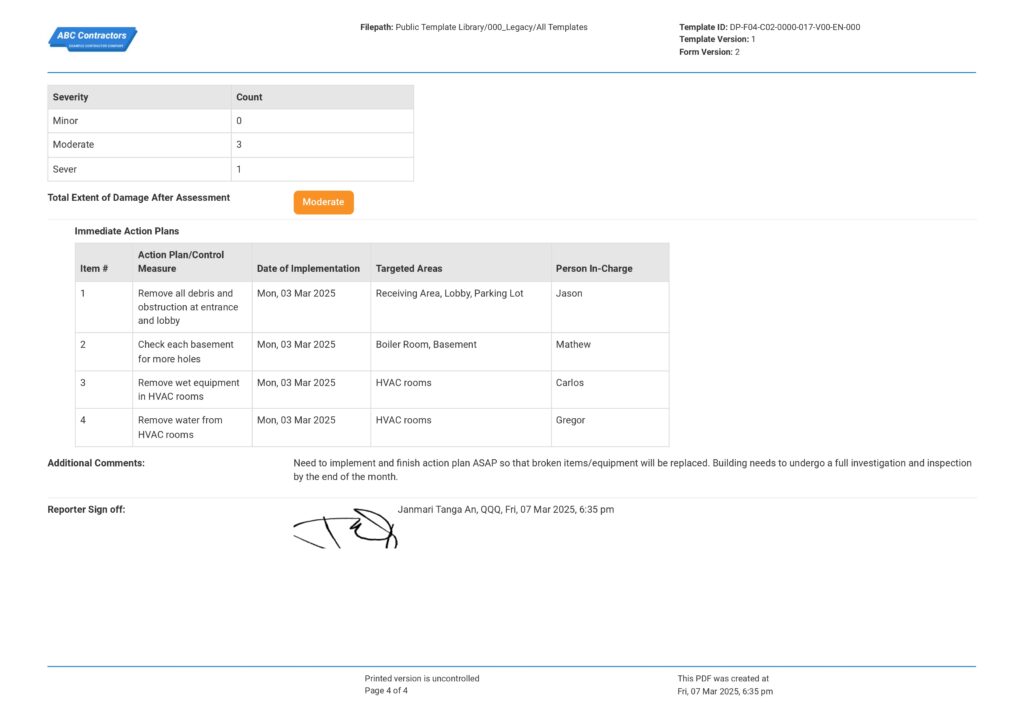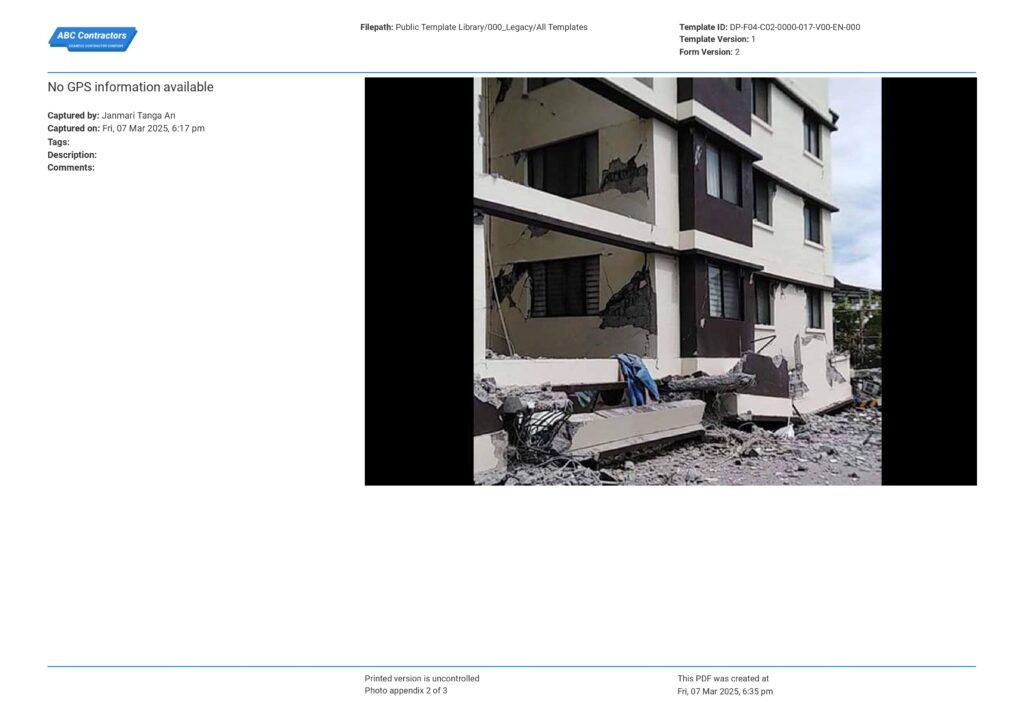Article Page – Damage Assessment in Disaster Management
Damage Assessment in Disaster Management
In this article, we’ll provide a comprehensive breakdown of damage assessment in disaster management and its stages, primarily focusing on the recovery stage and the resources and tools needed to get this right.
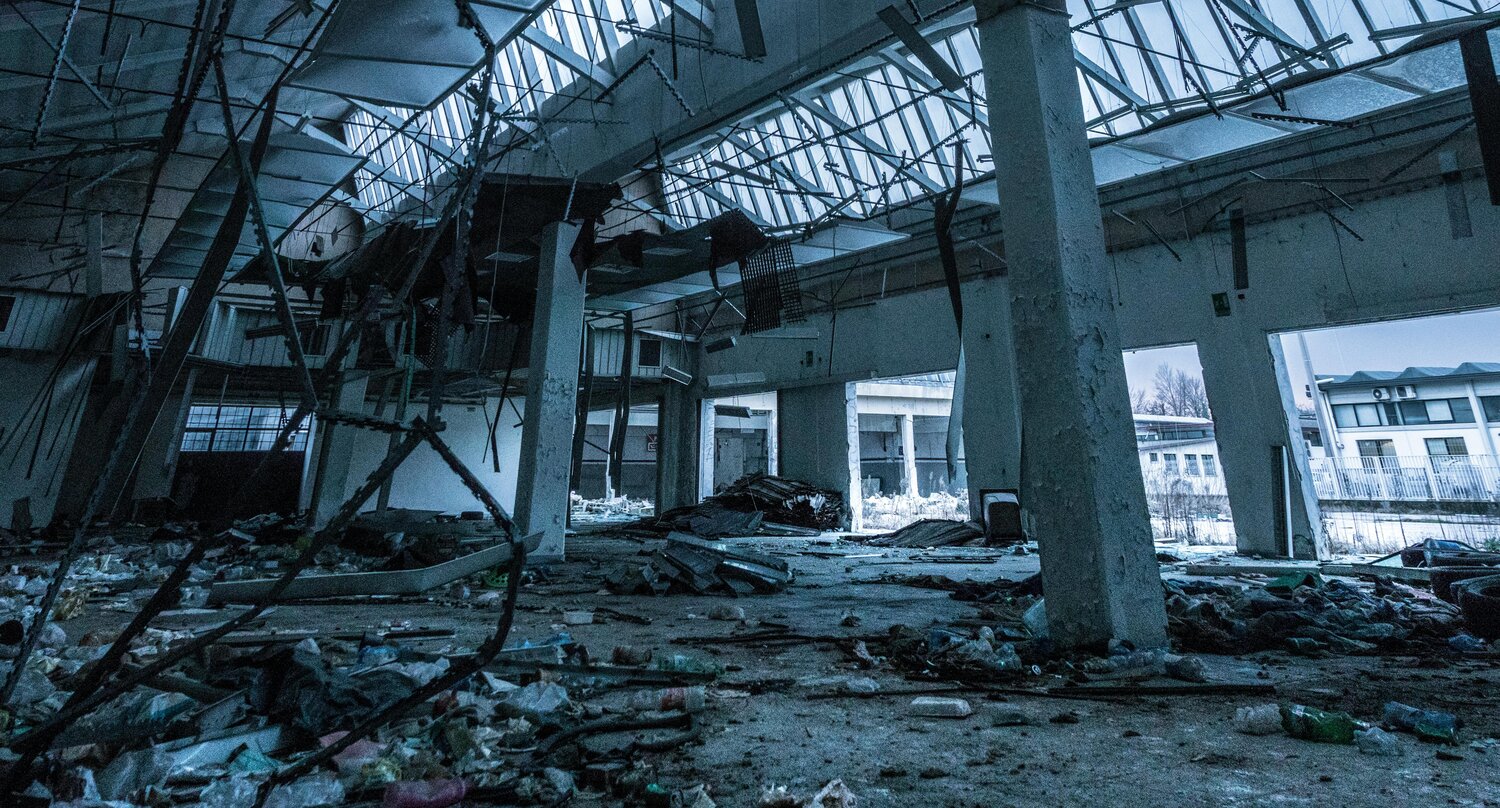
The role of Damage Assessment
When a catastrophic event like earthquakes, fires, storms, cyclones, landslides or industrial accidents happen–it causes major disturbances in a local community, and in response the authorities and emergency response teams who should be well equipped with disaster preparedness, will issue warnings, facilitate evacuation, conduct rescue operations and lead rehabilitation initiatives as part of disaster management.
While these post-disaster plans seem straightforward, the success of it will start first with an effective damage assessment–it's basically understanding the extent of the problem to implement solutions. There are disasters that can be pre-empted using studies and early warning systems, however most of the time disastrous events are sudden and can’t be averted and the best thing to do is to perform damage assessments and conduct disaster management strategies to minimise the damage as much as possible and enhance preparation in the future occurrences.
In this article, we’ll provide a breakdown of disaster management and its stages. However, we will focus primarily on the stage of recovery and how damage assessment plays a vital role in disaster management, the different type of damage assessments and finally discuss strategies to effectively conduct damage assessment.
What is disaster management?
Firstly, let’s define what are disasters? Disasters are significant disruptions that cause widespread damage or loss in a community. Disasters can be natural or man-made and cause severe damage to the functionality of a community from damage to properties and infrastructures to loss of jobs and loss of lives. Natural disasters are physical phenomena caused by climate events such as earthquakes, tsunami, and landslides and man-made disasters are caused by human errors such as industrial explosions or collapse of infrastructure due to poor design.
Disaster management is the process of managing a disaster by defining strategies to prepare and mitigate the impact of the disaster through effective preparation and response and finally recovery which deals with assessing the damage of the disaster and rebuild or rehabilitate the community. Technically this is known as disaster management cycle.
The disaster management cycle is a rotational process that involves several stages:
Prevention – this is the process of preparing and implementing emergency plans like evacuation, designing cities to minimise the risk of flooding.
Mitigation – when you reduce the impact of the disaster by reducing the damage that disasters cause to people and property. It is when land use and building codes are improved and implemented, when engineering controls are enforced, and hazard mapping are performed.
Preparedness - the different methodologies to prepare for a major catastrophe whether natural or man-made, these are local regulations and community preparedness to be proactive in the event of early warning signs and a series of planning and training for responders to address disasters which are often the result of mitigation plans
Response – this is what happens after the disaster including emergency protocols and conducting search and rescue operations. This is when ongoing hazards are removed, and lingering fires will be put out.
Recovery – is the last stage of disaster management, this is when all efforts are focused on restoring the community’s function and rehabilitating the properties after a disaster. The recovery can depend on the severity of the damage.
To initialise the stage of recovery, the damage is assessed to understand what needs to be done. For the purpose of this post, let’s take a closer look to understand damage assessment.
What is Damage Assessment in Disaster Management? Meaning, Example and Different Types
Damage assessments is an evaluation of how huge the damage is and determining the nature and extent of the results of a disaster. It involves being aware of the situation like what caused the disaster, where did it occur and the additional risks because of the location, the severity of the disaster, the impact it has to the community and what does the public know about it, and should further warnings be communicated?
The goal of damage assessment is to trigger disaster management planning, and this should be outlined in a comprehensive damage assessment report. For example, a good damage assessment report would describe the incident, site the source of the damage through description or sketches. Lay out the identified damages and its severity to plan course of action for response and preparation.
Damage Assessment Documentation and Supporting Materials
You can see a good example of Damage Assessment Report below. A good report structure is one of the most important aspects of damage assessment in disaster management, as it serves multiple purposes including documenting the damage, understanding the damage, and then creating actions based off that damage report.
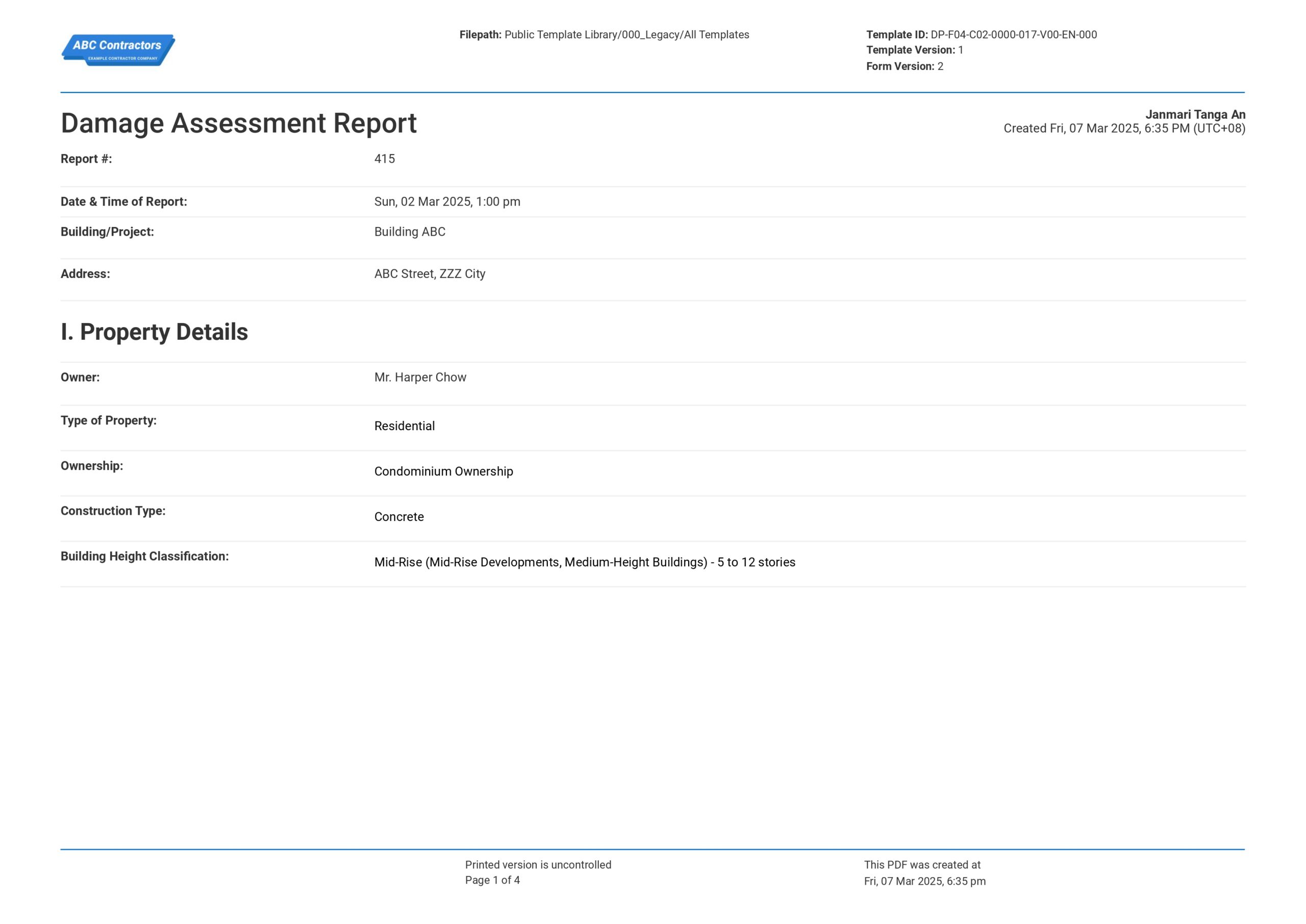
Improve your damage assessment in disaster management with this document.
What are the different types of Damage Assessment?
There are different types of damage assessments pertaining to the disaster, the following are the most common:
Fire damage assessment in disaster management
Disasters caused by fire hazards whether industrial or natural have devastating impact on human lives, property and environment. Fire can quickly spread out and cause major damages in a short span of time especially when it happens on populated areas or locations that are highly flammable. The damage can often be irreversible and when it happens, it’s important to control the fire and start right away with the emergency responses.
After controlling the fire and conducting emergency operations, it is crucial to create a structured fire damage assessment report that outlines the scope of the fire to know where to focus the mitigation.
Building damage assessment
Building damage assessment involves quick initial assessment to identify evidently unsafe buildings and those requiring immediate intervention to prevent further damage or cave-in followed by a hazard assessment of the damaged building by experts to analyse the risk of damage building components like structural cracks in wall, floors and building surfaces, the tendency of a building collapse upon entry and exposed rebars.
Building damage assessment is crucial especially when dealing with post-earthquakes situations. There are times the damage is not readily observed but will surface later in the event of an aftershock and escalates into a collapse.
For this reason, initial building damage assessment should first ensure the safety of the responders and the public, thorough assessment that should be done in pairs, wearing of appropriate personal protective equipment, and careful surveying of the building exterior before entering.
Structural damage assessment in disaster management
Building damage assessment and structural damage assessment are related but would differ in terms of scope. Building damage assessment will cover a holistic evaluation of the building after a disaster while structural damage assessment focuses on the structural integrity evaluation of the damages in the building after a disaster which essentially is identifying foundation cracks, checking missing mortar between bricks or blocks and check sagging roof ridge.
Structural damage assessment requires to be thorough and detailed as it would be useful for renovation of the property but at the same time ensure compliance of local building regulations as well as for the purpose of property damage insurance claims.
Flood damage assessment
Flood which are basically accumulation of water in a dry land can be disastrous. Flood disasters can be caused by heavy rain, prolonged rain for several days, melting snow and ice, or broken dams due to poor water control structure, these can happen almost anywhere and can escalate to flash floods, property damage and loss of life.
Flood damage assessment often involves investigation of the location and the vulnerability of exposed properties such as residential buildings, and even the time the flood started and until when did it occur as there are studies right now of evaluating how the length of time affects the severity of the damage due to floods. Flood damage assessment can also be the basis of determining costs and effects of flood risk mitigation efforts of a community.
Storm damage assessment
Storms are terrible, it can overturn a small house, test the foundation of your properties, topple trees and flip vehicles. Storm damage assessment need to be highly reliable, and it should be made sure that it can be done offline as storms can often cause major network damage. Just like all the variations of damage assessment, the storm damage assessment would evaluate the extent of the damage of the storm, the areas affected, and the properties that are damage and its severity.
How to Conduct Effective Damage Assessment?
Damage assessment needs to be effective because it is the beginning of a recovery of the community, it needs to be reliable for the purpose of insurance claims and cost estimates of renovation and rehabilitation.
Ensure Safety First in Disaster Management
It’s important that when conducting damage assessment, inspectors will not be part of the casualties. Part of a meticulous damage assessment is ensuring proper wearing of PPE and ensuring first if the area is safe to enter, and assessors are well-equipped and well-trained in performing damage assessment.
Utilise Proper Reporting
Documenting damage involves creating a detailed record of an incident including the extent of the damage. This should include photos, videos, sketches and other important documentations to serve the various purposes of damage assessment report.
While a lot of organisations are transitioning to digital means when conducting assessments, trusted agencies like Federal Emergency Management Agency (FEMA) in the United States are encouraging switching to digital means to improve accuracy damage assessment reporting.
Performing paper-based damage assessments often come with different issues relating to the use of paper forms such as its vulnerability to loss or damage especially in the event of fire or floods, paper forms can be damaged and during assessments it also requires separate storage spaces.
Paper forms can also reduce productivity due to requiring multiple tools for damage assessment documentation like needing the paper document to scan it for reporting, then needing an external camera to support the documentation.
Utilising a digital damage assessment software to optimise the process of assessment by merging all the tools necessary like documentation, taking photos or videos, creating sketches all in a single platform will work wonders in recovery efforts in the event of a disaster.
Summarising damage assessment in disaster management
In this article, we primarily focused on damage assessment in disaster management by first defining disaster and the stages of disaster management cycle, presenting different types of damage assessment and outlined a few strategies to improve damage assessment to improve disaster management recovery.

Field inspection report
Easily conduct your field inspections and generate professionally formatted reports from anywhere using this form

Defect report
Manage and rectify those inevitable defects with ease

Concrete inspection
Ensure your concrete placements are inspected, recorded and (quality) controlled with this checklist
